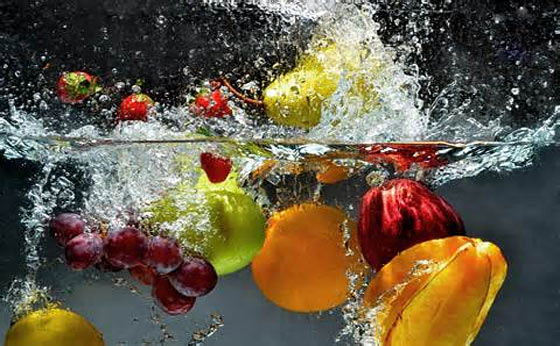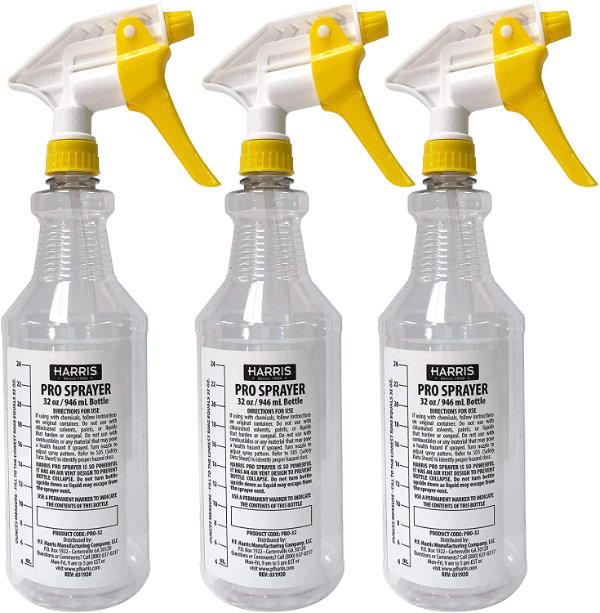Sanitizing Fruits and Vegetables in a Chlorine Bleach Wash or Spray Bottle

Set your mind at ease. I will provide the recipe how to disinfect your fruits and vegetables. Actually, two methods. A ‘wash’ (soak), and spray bottle. Each using regular chlorine bleach in a dilution recommended by the USDA and other sources.
There are plenty of sensible reasons why you should wash-sanitize-disinfect produce. Not the least of which is prior handling by others. Especially given the current ‘Covid’ environment. Sanitizing is simply a smart thing to do. Why? Because of the various ways these vegetables could get contaminated along the supply chain. Until, and including, when it’s on your grocery store shelves.
When buying fruits and vegetables at the grocery store, you probably don’t know exactly where it came from. And the sanitary (or lack thereof) conditions. All of the handling and processing. Whether or not (or how) it was cleaned. The number of people who picked up the produce and put it back down on the grocery store shelf. And the hygiene of those who handled it.
We occasionally hear of salmonella contamination of raw fruits and vegetables causing gastrointestinal illnesses. It’s not that hard to imagine how it could happen…
Here’s how to assure that your raw fruits and vegetables are sanitized:
How to Disinfect Fruits and Vegetables
Chlorine bleach. Yes, that’s right… Regular household bleach, diluted to the proper concentration. It will disinfect your produce.
Chlorine bleach solutions may be used for sanitizing raw fruits and vegetables.
Federal regulations permit the use of sodium hypochlorite (chlorine bleach) in washing produce (21 CFR Part 173).
The conditions:
- The concentration of sanitizer in the wash water must not exceed 2000 ppm hypochlorite.
- The produce must be rinsed with potable water following the chlorine treatment.
Having said that, most sanitizing operations will not need a sanitizer concentration greater than 200 ppm total chlorine to achieve the desired sanitizing effect. Unless the produce is very dirty. And provided contact times of one minute or greater (typically sufficient to achieve a thorough disinfect).
Chlorine Wash For Vegetables – Soak Method
This will result in a 200 ppm (parts per million) chlorine solution. Make the solution in a bowl for soaking the vegetables (for about one minute).
Bleach Solution For Soaking Bowl Method
Dilution of bleach to water ratio is 1:392 for bleach with 8.25% sodium hypochlorite as the active ingredient.
- 2 teaspoons Regular Bleach
- 1 Gallon of clean water
Let fruit or vegetables stand in solution for at least one minute.
Then rinse with tap water or potable water.
Note: Use Regular bleach (no additives) with sodium hypochlorite as the active ingredient. Today’s Regular Clorox bleach is ‘concentrated’ at 8.25% sodium hypochlorite. If you are using Regular bleach of 5 – 6.25% sodium hypochlorite (read the label), then use 3 teaspoons bleach per gallon to achieve a 200 ppm sanitizing solution.
Chlorine Wash For Vegetables – Spray Bottle Method
This will be the same formula above (200 ppm). Except I’ve adjusted the amounts to use typical size spray bottles.
You might use this method to spray the outer surface of vegetables instead of soaking them in a bowl. Like Avocados (for example). Or Cantaloupe. You get the idea…
As long as the surface is completely spray soaked, let it sit for a minute and then rinse off.
Bleach Solution For Spray Bottles:
This will make 200 ppm solution while using Regular Bleach with 8.25% sodium hypochlorite as active ingredient. Dilution of bleach to water ratio is 1:392
- 1/4 teaspoon with 16 ounces (2 cups) water
- 1/2 teaspoon with 32 ounces (quart) water
Use a heavy duty spray bottle that’s designed for chemicals. The nozzle will last longer…
HARRIS PRO 32 Ounce Spray Bottles
(view on amzn)

CAUTION: Do not mix Bleach with other household chemicals. Toxic fumes could result.
This is the vegetable brush that we also use. Very convenient.
OXO Vegetable Brush
(view on amzn)

Sources:
- Oklahoma Cooperative Extension Service
- Division of Agricultural Sciences and Natural Resources
- U.S. Food and Drug Administration
[ Read: Bleach Water Ratio For Disinfecting Surfaces | Make Your Own Disinfectant ]
